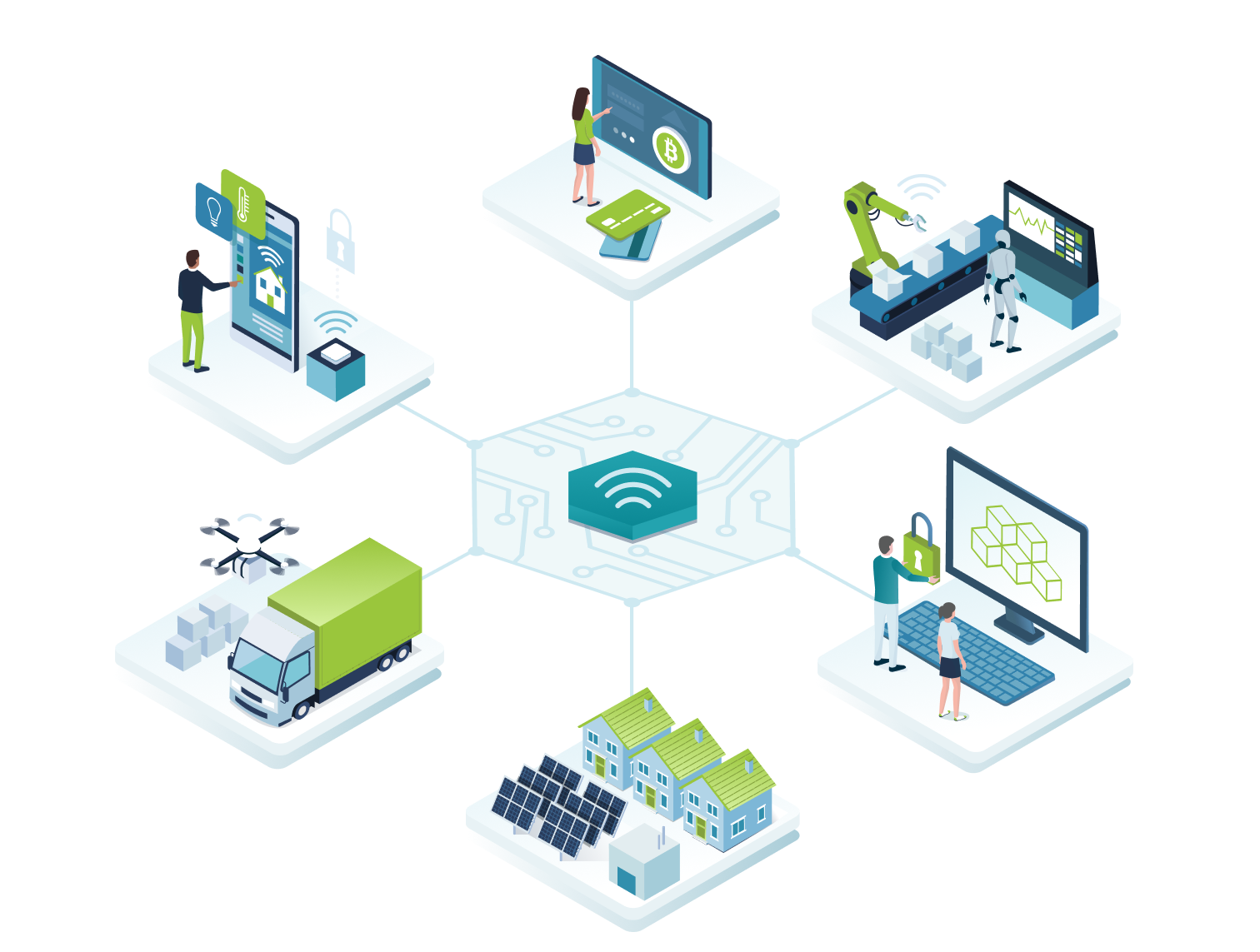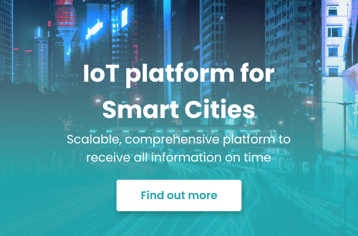Egypt Smart City in the making - Intelligent Cities Conference Cairo 2021 report

- MOBILITY
- IOT
- E-MOBILITY
- EVENT REPORT
- SMART CITIES
IoT market size in Egypt is set to grow at a steady compound annual growth rate by 2026. Leading authorities support the digital transformation of the country by investing in the newest IoT technologies. ICT 2030 strategy creates the environment for market players to boost the growth of the IoT market in Egypt by adopting information technology solutions in highlighted industries, including manufacturing, healthcare, consumer electronics and retail. 
Following Middle-East city best practices in the deserts, Egypt builds its brand-new capital city 35 kilometres east from Cairo. The project was announced in 2015 by the president of Egypt, Abdel Fattah al-Sisi. The project is set to cost 1 trillion Egyptian pounds ($58 billion). The new smart city lies between the regional ring road, the Cairo-Suez road and Cairo-El Ain El Sokhna road. As written in the official statement, the city will help strengthen and diversify the country's economic potential by creating unique places to live, work and visit. In order to motivate residents in Egypt to move to the newest capital, many IoT developments are needed to make the city more favourable compared to others in Egypt.
Overview of the yet "unknown named" smart city:
- 6,500,000 population
- 725 ㎢ gross land area
- 1,750,000 Permanent jobs
- 21 Residential areas
- 650 km roads
- International airport
Accommodating 7 million people is quite a big challenge for every city; the new capital project uses best practices from other smart cities, such as London, New York, Singapore and Seoul.
Egypt's smart city puts a great emphasis on the following urban IoT developments:
Smart Traffic:
Smart Traffic Management Systems helps increase the capacity of city streets without adding new roads to the system. Smart Traffic Management Systems are technology solutions that provide rapid, cost-effective improvements in security and traffic flow on city streets. Some of the vital IoT features:
- Congestion detection
- Adaptive control
- Connected vehicle network
- Emergency routing
Smart Utilities:
Smart utility (electricity, gas, water) companies heavily depend on the Internet of Things to connect smart sensors across the grids and receive data. Smart utility investments facilitate innovative energy management as well. Some of the vital IoT features:
- Optimizing asset performance
- Using real-time BI
- Leveraging the smart grid and intelligence
- Preventing utility loss
- Modernizing the grid
Smart Buildings:
We call a building intelligent when it uses automated processes to automatically control operations, including heating, ventilation, air conditioning, lighting, security and other systems. It helps facility managers and building owners improve asset reliability and minimize the facility's environmental impact.
Optical Fiber Infrastructure, Connectivity:
The infrastructure uses fiber-optic technology to reach the fastest speeds available. Increased bandwidth allows fiber to deliver data from kilobits to megabits to multiple gigabits per second. No other tools ensure this level of cable plant longevity and connectivity. Broadband is crucial to the world we live in; Fiber Infrastructure is a must for smart city stakeholders to have convenient IoT access around them.
Waste management:
Intelligent waste management focuses on solving solid waste management problems using sensors, smart monitoring systems, and mobile applications. IoT solutions for substantial waste management problems give cities access to data intelligence and real-time penetrations.
Overall, Egypt IoT market is focusing on the following:
- Smart Manufacturing
- Consumer Electronics
- Building & Home Automation
- Smart Mobility & Transportation
- Connected Logistics
Leading IoT development regions in Egypt:
- Cairo
- Alexandria
- Giza
- Qalyubia
- Port Said
- Suez
Share this post on social media:
Posts by Tag
- IoT (17)
- Smart cities (16)
- E-mobility (14)
- Energy Management (10)
- Mobility (9)
- Software development (9)
- Marketing automation (6)
- RPA (6)
- Robotic Process Automation (6)
- electric vehicles (6)
- Internet of Things (5)
- IoT solution (5)
- Marketing software (5)
- Smart Building (5)
- Business Intelligence (4)
- Custom applications (4)
- IoT platform (4)
- Uipath (4)
- electric charging (4)
- IoT devices (3)
- Properties (3)
- AI (2)
- BI (2)
- Montu (2)
- Multi-device functionality (2)
- Omnichannel (2)
- RPA Budapest (2)
- Smart city (2)
- UX design (2)
- app development (2)
- artificial intelligence (2)
- crm (2)
- crm software (2)
- electric charging station (2)
- machine learning (2)
- marketing campaign (2)
- optima (2)
- API Testing (1)
- Agriculture (1)
- Automated Testing (1)
- BYOD (1)
- EV (1)
- Energy Communities (1)
- Event insights (1)
- Event report (1)
- Green IoT (1)
- HR (1)
- IT Outsourcing (1)
- ML (1)
- Power BI (1)
- Resource Management (1)
- Smart Home (1)
- Smart Office (1)
- TaaS (1)
- UX/UI Design (1)
- Xamarin (1)
- cloud (1)
- cloud computing (1)
- cross-selling (1)
- data driven marketing (1)
- digital twin (1)
- dynamic customer segmentation (1)
- esg (1)
- inbound marketing (1)
- industry 4.0 (1)
- onprem (1)
- onpremise (1)
- scalability (1)
- software robot (1)
- testing as a service (1)
- upselling (1)
Recent Posts
Read On

- RPA
- UIPATH
- ROBOTIC PROCESS AUTOMATION
Which processes can be automated in banking and financial services?
The Banking and Financial industry, due to technological advancements, is continuously changing. The sector is under pressure to lower costs while companies need to provide the highest quality services to their clients to remain competitive on the market. Robotic Process Automation (RPA) is a...

- IOT
- IOT PLATFORM
- SMART CITY
- SMART CITIES
IoT Smart city development trends in 2022
Rapid urbanization is opening up new opportunities for smart cities, the latest technological developments help city decision-makers to tackle environmental, social and economic challenges effectively. It is estimated that global smart city investment revenues could reach $158 billion in 2022, with...

- IOT
- IOT SOLUTION
- SMART CITY
- GREEN IOT
- SMART CITIES
Green IoT: the emerging market in Internet of Things developments
Due to the tremendous developments in information and communications technology, things around us got connected, resulting in various smart city applications that enrich our society.




